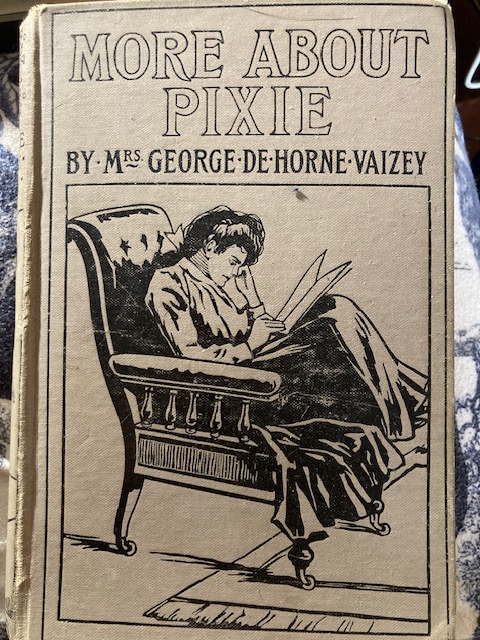Pam’s Pictorama Post: Today’s Pictorama post is brought to you with love and thanks to our friend Bruce Simon who contributed this to the Pictorama archive recently. (Yay and thank you Bruce!) Bruce, involved in all things cartoon, comic and animation has been a decades long friend to Deitch Studio, but known Kim even longer. He has previously plied me with a supply of wonderful early cartoons – Felix, Krazy and others.
Bruce, his wife Jackie and their peppy pup live on the west coast so we are mostly online and postal pals these days, although we look forward to their upcoming sojourn to NYC in June and also perhaps seeing them at our trip to Comic Con in July. (Kim and I heading out to Comic Con this year as he is receiving an Eisner lifetime achievement award – certainly a future travel post there!)
Onto Felix however and this wonderful little item. An interesting Pictorama secret is that I actually own several of these annuals, three came in the group buy from an auction last year. In addition, I own a few other extremely rarified ones that are not Felix related and all of these will likely make their way into future posts.

While I have tackled my Pip, Squeak and Wilfred annuals (one early post can be found here and another here) I am a bit confounded by conveying the wealth of Felix entertainment in one of these volumes. Virtually every page is sort of a gem – either early Messmer strips or those beloved boxy off-model Felix-es supplied by a British artist. Felix’s British alter ego. I don’t mean to be stingy, just a bit overwhelming to feel I am doing them justice. Let’s see how I do today.
I think Felix is Easter ready on the cover of this 1925 annual (a nod to those of you who are celebrating today) with his basket of fish instead of Easter eggs! This is the great squared off Felix which I note above and ongoing readers know how much I like a square Felix! He is stealing away with the fisherman’s catch, the fisherman is either so deeply involved in his rod or nodding off – I can’t tell.
1925 appears to be the second year of the annuals and for some reason it is said to be less available, although you could buy one right now from what I can see. They are said to have lasted at least through 1929, which would give me all but one of them if true. Published through the Daily Sketch and Sunday Herald Ltd. the years of publication are nowhere in evidence in these books. For the devoted reader these can be had if a tad dear.


While the book is made up largely of black and white, presumably Sunday, strips, there are what I assume are British produced full color plates throughout which almost, loosely tell a story too. Then there is a center spread of four or so strips which are printed in red and black. This seems to roughly be the format of these annuals. It is interesting to me that the Pip, Squeak and Wilfred ones ran so much longer than Felix, despite his popularity. Those have a run from roughly ’22-’39. The British comics reading public did love their annuals however.
This volume also has hand painted embellishments on a few pages from a well meaning child. This is also very common indeed and not a surprise to anyone who collects children’s volumes of any kind.


The inside front and back covers are the same goofy design where Felix seems to have ascended to the heavens where he is surrounded by good things to eat (including mice) and admired by an anonymous cat below. There is also a front and back plate of him – sadly the back one is marred by a strange remnant of something unidentified which is on several pages of the book.


These annuals were sturdy in their construction – well bound and with thick pages. Even with that some of the pages in this 100 year old volume are worn right through with years of thumbing. The back outside cover is a not especially interesting ad for Ovaltine.
The comics within are worthy and I am enjoying reading them in bits here and there. I am more a fan of daily strips than Sundays in general, but these are fun and very much like the cartoons.
I promise more to come on these, but I hope today has been a tantalizing taste.




































































